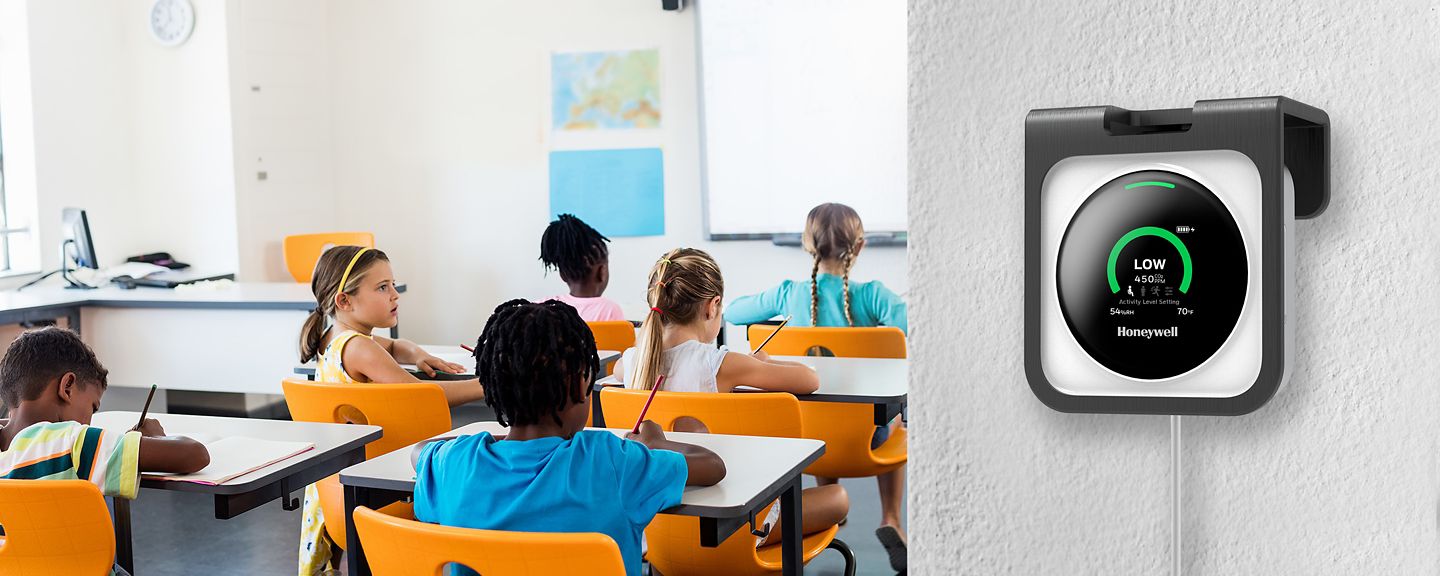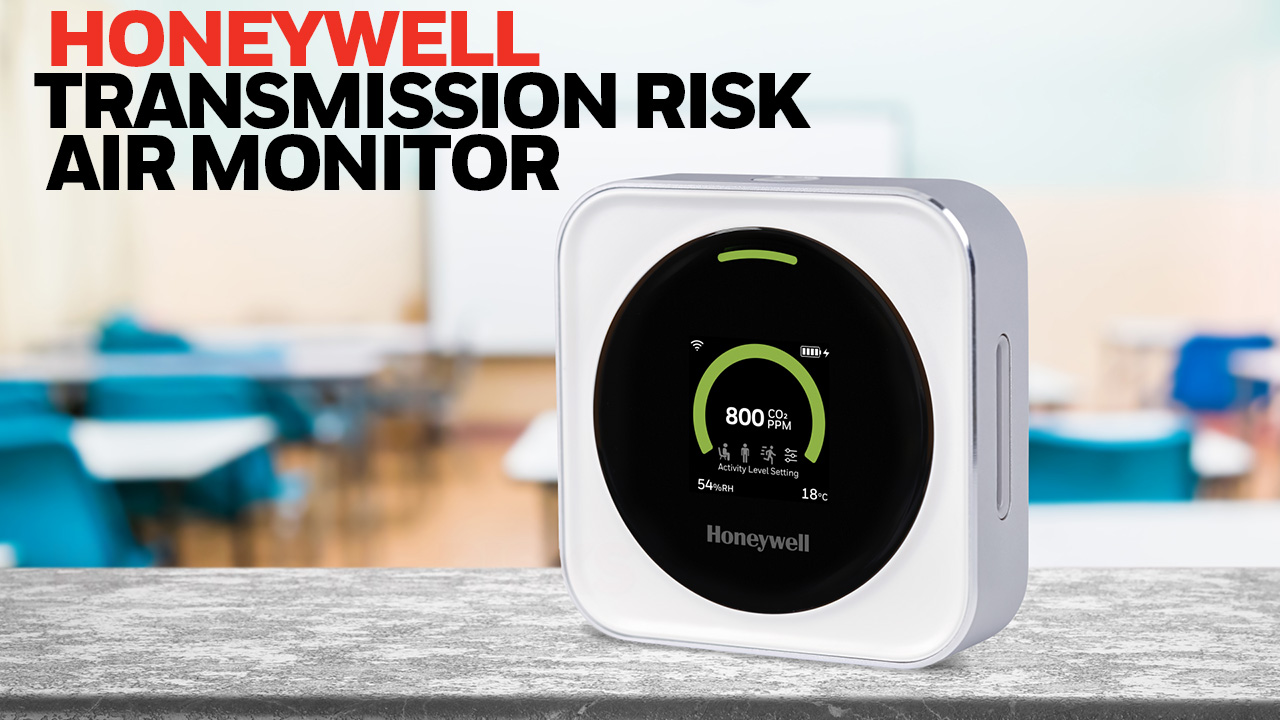Simplifying Air Quality Monitoring
Spaces like classrooms, restaurants, and buildings with outdated HVAC and ventilation systems can foster environments where the risk of potential airborne virus transmission could increase.
Research conducted by scientists at the University of Colorado1 has shown that real-time monitoring of indoor ambient air can be an indicator of increased risk of potential airborne viral transmission, utilizing different levels of risk-based factors such as CO2 concentration levels and the type of human activity in the area.
Use ESSER Funds to Improve Student Outcomes
Key Considerations for CO2 Monitoring in Educational Settings
Help Create the Best Environment for Students to Learn and Teachers to Teach
Learning Starts With a Healthy Classroom
Speak to an expert to learn more
References:
- Carbon Dioxide Levels Reflect COVID Risk, Cooperative Institute for Research in Environmental Sciences at the University of Colorado Boulder (2021)
*The Honeywell Transmission Risk Air Monitor (HTRAM) analyzes specific air quality conditions and alerts the user when conditions are present that may increase the risk of exposure to airborne viral transmission. It does not prevent or reduce virus transmission nor mitigate viruses that may be present, nor does it detect or warn against the presence of any virus, including but not limited to COVID-19. The HTRAM does not repel or destroy any microorganism, viruses, bacteria, or germs. These statements have not been evaluated by the FDA. This device is not intended to diagnose, treat, prevent or cure any disease.
- It is buyer’s sole responsibility (1) to determine the suitability of the HTRAM for use in its application, (2) to operate the HTRAM in accordance with the user manual and any other instructions provided by Honeywell, (3) to determine, based on buyer’s experience, expertise, and other available tools, the suitability of any product or service it may offer or recommend to the end user.
- Buyer is responsible for determining whether the product is appropriate for use under certain statutory guidelines and are likewise responsible for determining whether the HTRAM is subject to any government reimbursement programs.
- Any recommendations or assistance provided by Honeywell regarding the use or operation of the HTRAM – through our literature, the Honeywell web site, or otherwise – shall not be construed as representations or warranties of any kind, express or implied, and such information is accepted at buyer’s own risk and without any obligation or liability to Honeywell.
- The information supplied herein is believed to be accurate and reliable as of this writing. However, specifications may change without notice, and Honeywell assumes no responsibility for its use.
- Honeywell disclaims all implied warranties, including those of merchantability and fitness for a particular purpose. In no event shall Honeywell be liable for consequential, special, incidental, or indirect damages, or lost profits or lost revenues.




